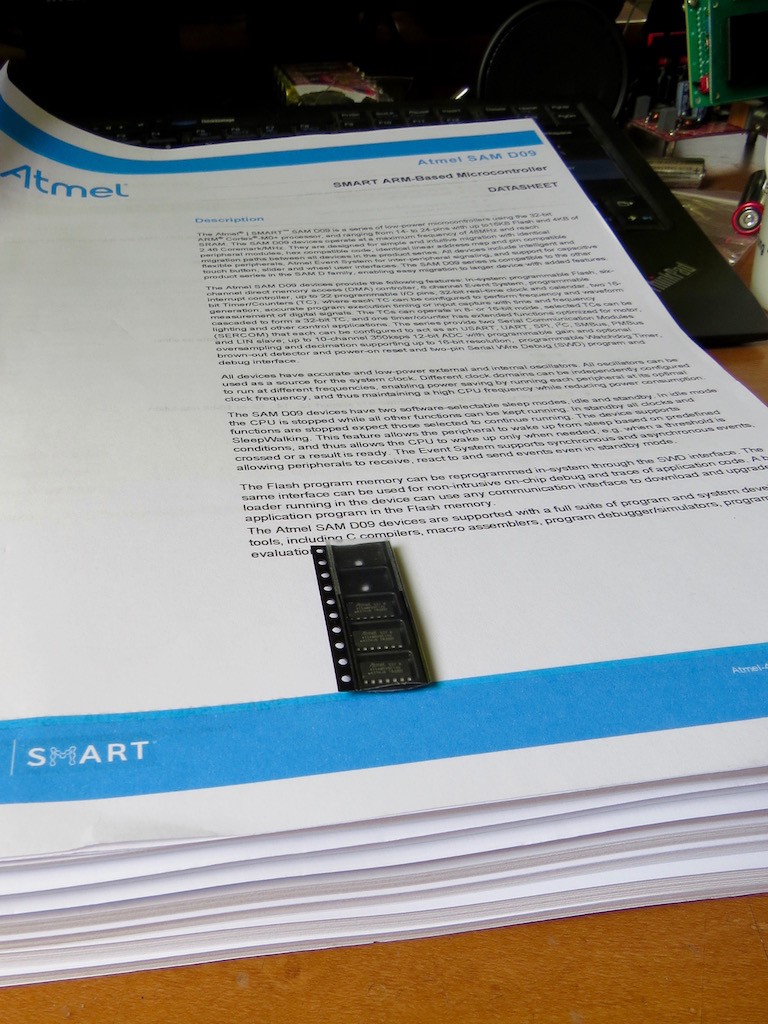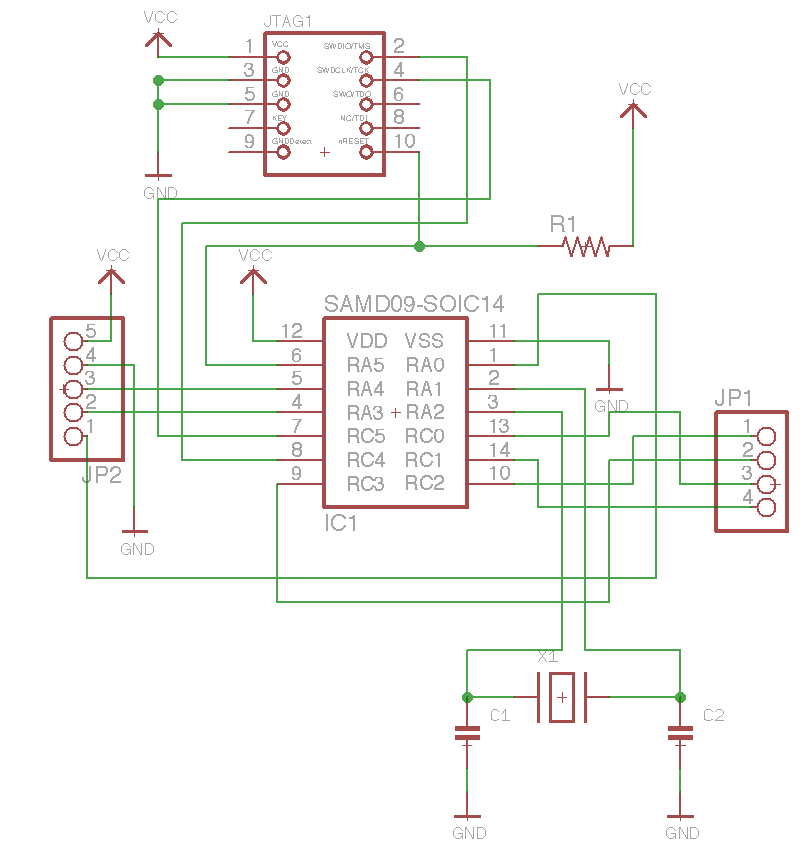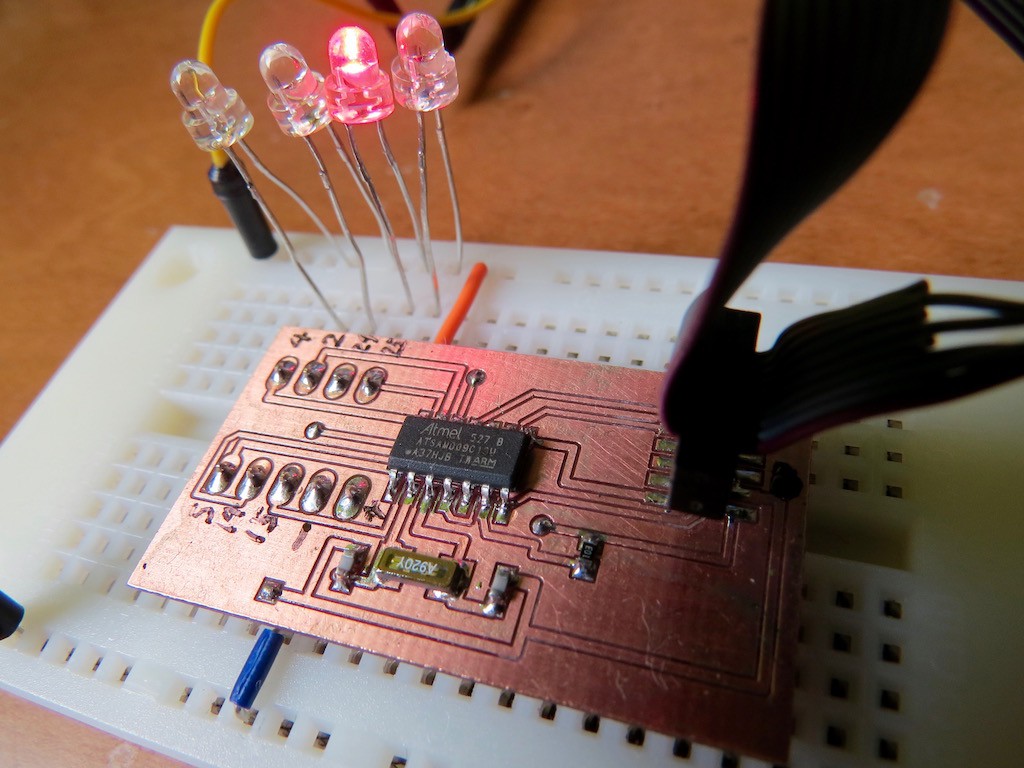I've knew Atmel's Cortex M0+ series (SAMD21) and used for making Arduino Zero compatible in another project. SAMD21 has quite rich I/O and even natively support USB interface, no need of FTDI. This time, I found one thing that Atmel's SAMD09 is lowest price of Cortex M0+.

Before I used LPC810, which is a kind of low-price leader but SAMD09 has additional SRAM (4kB) and flash (8kB) and moreover, 12 bit A/D converter! even such a low price!

I don't (cannot) buy 3000pcs and checked price for single pieces and it is still 1.15 USD, and quickly ordered it and...

I've got them. Always I prefer "printed" data sheet for quick reference but this tiny chip has more than 700 pages data sheet!! (I notice nowadays is paperless and Atmel also does not expect to be printed out by paper, though...)

Here is actual chip shape. very small "ARM" logo can be found on it!

I quickly draw schematic for prototyping. SAMD09 has internal oscillator but I dare to put crystal for future interest. Programming can be done through Atmel ICE...

Here is the prototyping board I made. As an initial test, I uploaded LED blinking program driving 4 LEDs connecting PA2, PA4, PA24 and PA25.
The following movie will show you actual operation of this prototyping board. This project is about my learning process of SAMD09 and may not contain novelty but if you see something useful, I am very happy. Have fun!
 kodera2t
kodera2t
Discussions
Become a Hackaday.io Member
Create an account to leave a comment. Already have an account? Log In.
Nice find! Nice little M0+chip. I like QFN. I would complain the 708 pages is a bit short. ;)
- Their DMAC with descriptors+chaining is nice. Flexible in the triggering and peripherals. It is much better than the STM32F030F4. Reminds me of Kinetis.
- ADC with gain and internal reference.
- SPI at 12Mbps is a bit on the slow side. No VGA on this chip. :(
- No contiguous 8-bit GPIO aligned to byte access. Gaps prevent reading/writing out a byte without wasting cycles shifting bits around.
Are you sure? yes | no